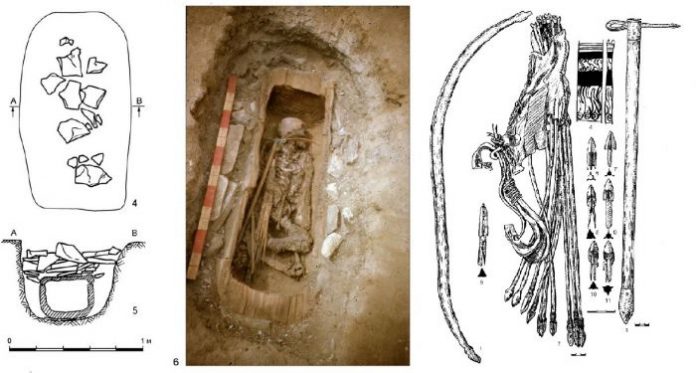In 1988, archaeologists from the RAS Institute for the History of Material Culture discovered a unique Scythian burial mound dating from the seventh century B.C. In one of the coffins, they found what was long believed to be the mummified remains of a teenage warrior boy buried with his weapons. According to cutting-edge DNA analysis reported in Stratum Plus by researchers from the Historical Genetics Lab at MIPT, the body actually belongs to a female, confirming Herodotus’ 2,500-year-old accounts of the Amazons, previously considered mythical.
The Scythians were an ancient warlike people living as nomads from the eighth century B.C. to the fourth century A.D. in the steppes between the lower Don and Danube. Most of what we know about Scythians comes from the ancient Greek reports of Herodotus, Hippocrates, and Pliny the Elder. Many Greek myths, including the accounts of Herodotus, mention a western tribe of warrior women living on the shores of the Black Sea and the Sea of Azov. However, until recently there was no confirmation of a similar phenomenon among the Scythians of Siberia.
The Saryg-Bulun burial site was discovered in 1988 during archaeological excavations off the right bank of the upper Yenisei, in the present-day Tuva Republic of Russia. Among those interred was a child aged between 12 and 14 years old, buried with full combat gear: a bow and arrows, and an ax. The favorable isolated environment resulted in the preservation of the organic material in the mummy of the assumed Scythian boy.
Traditionally, archaeologists working with ancient human remains infer sex from anatomical features and indirect clues, which are not always reliable. For example, the pelvic structure of men and women differs, though not as much in children. Or there might be some symbolic implements in the grave — a mirror or a spear, perhaps. Ironically, relying on such items for sex determination may make us even more gender-biased than our forebears from 2,500 years ago.
Archaeologists have come to this realization on multiple occasions since advanced genetic analysis techniques became available several years ago. As a result, it is becoming increasingly common to complement historical analysis with DNA assays, which have emerged as the standard procedure for sex determination making up for the potential deficiencies of the conventional approaches in archaeology.
To make use of these advanced tools, the archaeologists who originally unearthed the teenage warrior of Tuva over 30 years ago enlisted the help of researchers from the Historical Genetics Lab at MIPT, which is among the few laboratories worldwide capable of performing an ancient DNA analysis of such complexity.
“We were invited to investigate the paternal ancestry of the young warrior. And I have to say, we gave it our best. If only you’d seen how anxious it made us when at first things didn’t work out,” said Kharis Mustafin, the head of the MIPT Historical Genetics Lab. “When we examined the DNA fragments, we saw both short and long loci, but no loci associated with the Y chromosome. This led us to hypothesize that it might not be a male but rather a young woman buried in such a peculiar way. After a series of meticulous and detailed analyses that we performed using other techniques, we were able to establish that the remains indeed belonged to a young girl, apparently brought up as a warrior.”
Three teeth and a skin fragment were made available to the researchers for genetic analysis. Following purification, the samples were ground into bone powder to extract DNA from. To determine the buried person’s sex, the team performed a quantitative and qualitative DNA assay and analyzed an amelogenin gene via a molecular biology method known as polymerase chain reaction, which amplifies the initially low concentration of certain DNA fragments in the sample.
Since the study’s publication, the team has made more progress analyzing the ancient warrior’s genetic material. In an upcoming paper, pending peer review, the group led by Mustafin will report its findings concerning the maternal ancestry of the girl. There is also a larger-scale study in the makings, where the geneticists are again teaming up with their collaborators from the Institute for the History of Material Culture, who have retrieved about 70 new samples for DNA analysis dating from different epochs at a site not far from where the Tuvan Amazon was found.
Prior to their study of the Tuvan warrioress, the laboratory’s team focused on genetic research into the medieval population of present-day Russia. The series of ongoing studies of Scythians marks a transition into the realm of truly ancient DNA analysis, with some of the samples dating back to 4,000 years ago. The findings offer a new look at the life and culture of Scythian tribes, as well as providing broader insights into the humanity’s past.















